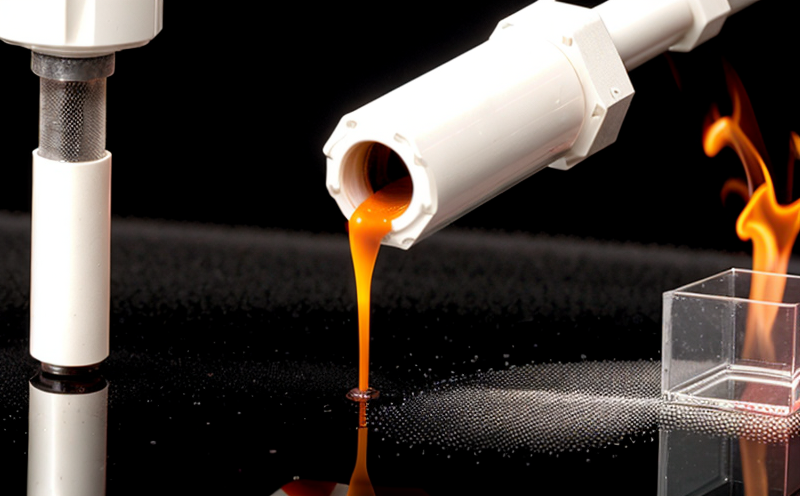ISO 10993 13 Degradation of Nanomaterials in Biological Environments
The ISO 10993-13 standard is a crucial framework for the evaluation and monitoring of nanomaterial stability and degradation within biological environments. This service ensures that nanomaterials used in medical devices, pharmaceutical products, and other biomedical applications are safe and do not release harmful substances into the human body.
The standard provides detailed protocols to assess the biocompatibility, toxicity, and potential adverse effects of nanomaterials when exposed to biological fluids such as blood, urine, and tissue cultures. This service is essential for regulatory compliance but also critical for ensuring product safety in real-world applications.
Understanding the degradation processes and by-products of nanomaterials helps manufacturers design safer products that meet stringent international standards. The service covers a broad range of tests including pH changes, osmotic pressure shifts, and the release rates of nanoparticles into biological fluids. These parameters are crucial for assessing the long-term safety and efficacy of medical devices containing nanomaterials.
The testing process involves several key steps. Initially, the nanomaterial is prepared in a biological environment that mimics actual physiological conditions as closely as possible. This preparation ensures accurate and reliable test results. Once the specimen is ready, it undergoes various degradation tests under controlled conditions to simulate real-world exposure scenarios.
The degradation process can be monitored using advanced analytical techniques such as scanning electron microscopy (SEM), transmission electron microscopy (TEM), and X-ray diffraction (XRD). These instruments provide detailed insights into structural changes within the nanomaterials. The release of nanoparticles is quantified through inductively coupled plasma mass spectrometry (ICP-MS) and other relevant analytical methods.
The results are then analyzed to determine compliance with ISO 10993-13 standards, ensuring that no harmful substances are released into the biological environment. Compliance with these standards is not only a legal requirement but also enhances consumer confidence in medical devices and pharmaceutical products containing nanomaterials.
This service plays a pivotal role in advancing biomedical technology by ensuring the safety of new materials before they reach clinical use. By providing accurate, reliable data on nanomaterial stability and degradation, this service supports informed decision-making in product development and regulatory submissions.
Why It Matters
The importance of ISO 10993-13 cannot be overstated, especially for industries reliant on innovative materials like nanomaterials. These advanced materials offer unprecedented benefits but also present unique challenges in terms of safety and regulatory compliance.
Biomedical applications often require materials that can interact with biological systems without causing harm. The degradation of these materials within the body is a critical consideration, as it directly impacts patient safety and device performance. By adhering to ISO 10993-13 standards, manufacturers ensure that their products do not release harmful by-products into the bloodstream or tissues.
Regulatory bodies worldwide recognize the importance of this standard, making compliance essential for market entry. Failure to meet these stringent requirements can lead to product recalls, legal disputes, and significant financial losses. Moreover, adherence enhances brand reputation and fosters consumer trust in innovative medical technologies.
From a broader societal perspective, ensuring the safety of nanomaterials contributes positively to public health by reducing risks associated with unintended exposure. This service supports sustainable development goals by promoting responsible innovation that minimizes environmental impact while maximizing benefits for healthcare.
Scope and Methodology
The scope of ISO 10993-13 covers the evaluation of nanomaterials used in medical devices, pharmaceutical products, and other biomedical applications. The service focuses on assessing the stability and degradation of these materials within biological environments to ensure they do not release harmful substances.
Methodologically, this involves preparing specimens under controlled conditions that simulate real-world exposure scenarios. Key parameters include pH changes, osmotic pressure shifts, and the rate at which nanoparticles are released into biological fluids such as blood or urine. Advanced analytical techniques like SEM, TEM, and XRD are employed to monitor structural changes within the nanomaterials.
The release of nanoparticles is quantified using ICP-MS and other relevant methods. Compliance with ISO 10993-13 standards ensures that no harmful substances are released into the biological environment. This comprehensive approach not only meets regulatory requirements but also enhances product safety and efficacy.
Environmental and Sustainability Contributions
The assessment of nanomaterial stability and degradation within biological environments is crucial for environmental sustainability, particularly in biomedical applications. Nanomaterials are often used in medical devices and pharmaceutical products where their performance and biocompatibility are vital.
By ensuring that these materials do not release harmful substances into the human body, this service contributes to public health by minimizing risks associated with unintended exposure. This not only enhances consumer trust but also supports responsible innovation within the industry.
The use of advanced analytical techniques like SEM, TEM, and XRD provides detailed insights into structural changes within nanomaterials during degradation processes. These methods help identify potential hazards early in the development process, allowing for necessary adjustments to be made before products reach clinical use.
Compliance with ISO 10993-13 standards ensures that medical devices and pharmaceutical products containing nanomaterials are safe and effective. This supports sustainable development goals by promoting responsible innovation that minimizes environmental impact while maximizing benefits for healthcare.





